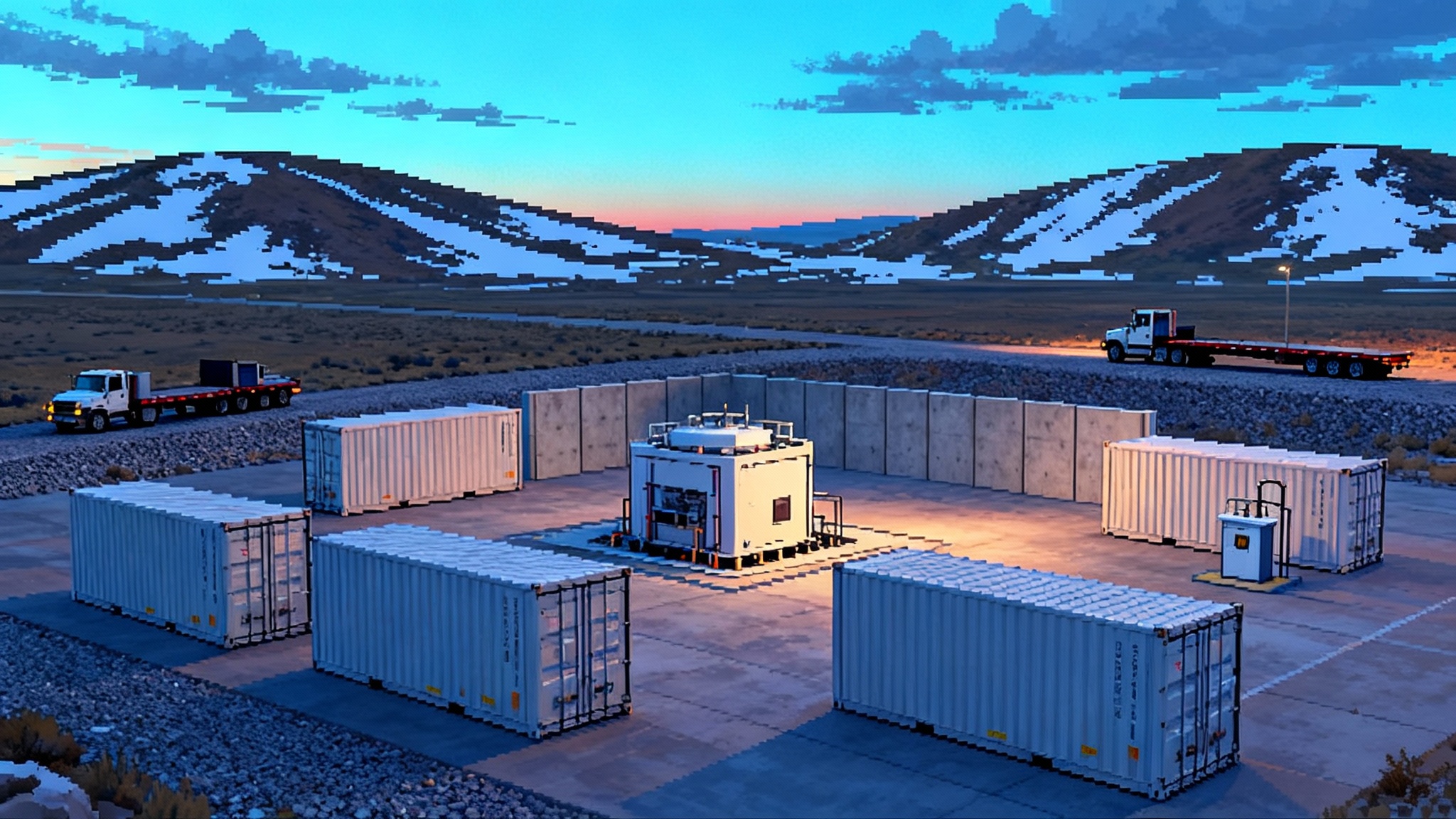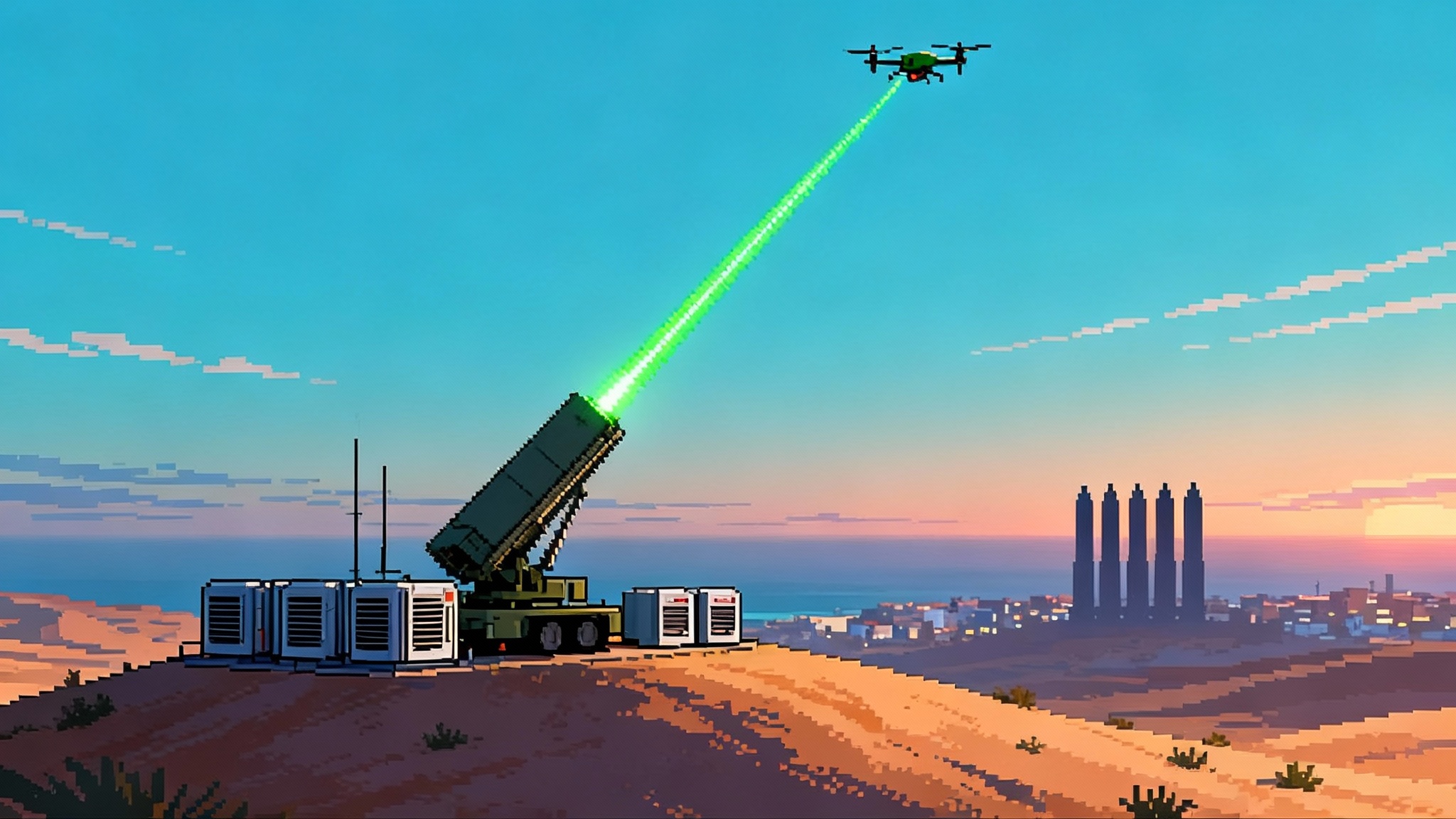Project Pele Enters Build Phase as BWXT Starts Core
The Pentagon’s transportable microreactor is moving from drawings to hardware. With BWXT starting TRISO core fabrication and INL readying the test site, the 1-5 MWe unit is edging toward trials that could change deployed power.

What just happened
The Department of Defense’s transportable microreactor, Project Pele, has moved from blueprint to build. In late July 2025 BWX Technologies announced it had begun fabricating the reactor core at its Lynchburg, Virginia campus, a milestone that turns years of design work into tangible hardware and places the program on a firmer glidepath to testing. See the company’s announcement, which sets out the start of core manufacturing and a notional first power target later this decade, for the hard marker on the timeline: BWXT core manufacturing has started.
That marker matters. It shifts the conversation about microreactors for defense from conference slides to shop floors and concrete pads. It also puts pressure on the other parts of the program that must mature in lockstep, from fuel supply and transport approvals to test infrastructure at Idaho National Laboratory, where the prototype will be assembled, fueled, and exercised under Department of Energy oversight.
A compact power plant that fits inside containers
Pele is designed to deliver between 1 and 5 megawatts of electric power, sustained and dispatchable, from a compact high temperature gas reactor that can travel in standard shipping containers. The prototype configuration uses four 20-foot containers for the reactor and associated systems, plus additional kit for power conditioning, shielding, and site operations. The fuel is TRISO, a particle fuel that encloses uranium kernels within layers of ceramic and carbon that act as robust containment at the grain level. TRISO’s physical resilience and high temperature performance are central to Pele’s safety case and its transportability.
Unlike diesel generators, which rely on vulnerable supply lines, Pele aims to run for several years without refueling while producing steady power regardless of weather. Unlike solar and batteries, it does not require large footprints or frequent logistics churning to replace or refuel. For expeditionary commanders trying to knit together radar pickets, air defense nodes, unmanned systems, and data pipelines, a mobile, megawatt-class power source is not a luxury. It is the missing substation.
Why this is a big deal for deployed operations
- Expeditionary bases. Modern forward operating sites have grown power hungry. Satellite links, multi-band radios, air surveillance radars, and mission planning shelters stack load after load. A few megawatts of reliable electricity can stabilize a base microgrid, reduce generator fleet size and maintenance tempo, and free up bulk fuel convoys for other missions.
- Energy-hungry sensors. Air and missile defense radars, high-power jammers, and persistent surveillance arrays benefit from clean, stable power with minimal harmonics. A microreactor with power conditioning can feed these systems without the brownouts that stress electronics and truncate detection ranges.
- Directed-energy systems. High energy lasers and high power microwave prototypes routinely chase megawatt-class electrical demand for brief bursts and high average power. A microreactor married to buffer storage and power electronics can supply the continuous baseline and let storage handle the spikes, which reduces the need for long daisy chains of diesel sets. For context, see allied advances in lasers rewrite air defense math and Army HPM debuts in Indo-Pacific.
- Logistics and survivability. Every gallon of fuel not hauled overland is one less target and one less mission diverted. Severing the link between power and fuel convoys can shrink the footprint and reduce predictable patterns that adversaries observe and attack.
What is being built and where it will be tested
The prototype is being manufactured by BWXT Advanced Technologies, with fueling and testing at Idaho National Laboratory. The plan is to assemble the reactor, transport it to INL, place it within a purpose-built shield structure, tie it into a specialized microgrid, and execute a test plan that includes powering it on, powering it down, moving it, and powering it back up to prove transportability and resilience. The Department of Defense detailed this sequence when it broke ground with INL on the test complex and explained that transport to the lab is scheduled in 2026 before initial power tests proceed. Those steps are outlined in the Pentagon’s own release on the program’s next phase: DoD and INL test site plan.
A few details matter for context:
- Oversight and safety. Because the demonstration occurs at a DOE site, safety oversight rests with DOE’s Idaho Operations Office rather than the Nuclear Regulatory Commission. This makes sense for a government prototype and keeps the regulatory learning loop tight between DoD, DOE, and national labs.
- Shielding and siting. The test plan anticipates a concrete shield structure and modular barriers that can be reconfigured as test objectives change. That configuration supports measurement of radiation fields, thermal performance, and operational procedures under realistic constraints.
- Electrical interface. Pele will feed a microgrid that can mimic field loads, including variable demand from radars, communications shelters, and directed-energy test stands. Proving reliable operation against a representative load profile is as important as the reactor physics itself.
Use cases beyond the wire
If Pele performs as designed, the military will have a new tool to reduce risk in places where the grid is weak or non-existent.
- Contested logistics. In a theater where adversaries target fuel storage and convoys, the ability to deliver a small reactor by air, rail, or road and run it for years can change how commanders plan. Instead of building tanker truck calendars, they can focus on distribution of consumables that cannot be generated locally, while electricity becomes a service the base can produce.
- Arctic and sub-Arctic stations. Cold weather sites in Alaska, Greenland, Norway, and Canada strain generator fleets and fuel delivery windows. A microreactor offers heat as well as power, which can reduce the need for separate boilers and cut the volume of fuel that must be pre-positioned before winter.
- Remote munitions and sensor depots. Electrified depots with climate control, modern cyber-physical security, and networked sensors require stable power. Pele can anchor these nodes without stringing long vulnerable feeders back to the grid.
- Disaster response. After a hurricane or earthquake, getting megawatt-scale power near hospitals, water treatment plants, and communications hubs can save lives. A transportable reactor that can operate for months without resupply could stabilize a region while crews rebuild the grid. That would require coordination with civil authorities and careful risk communication, but the potential is real.
The big risks and roadblocks
No one should expect the road from factory floor to field use to be easy. Several challenges could slow or limit what Pele can do.
- HALEU supply. Pele is designed to use high assay low enriched uranium. Domestic production is still ramping from pilot scale and remains limited. The United States is reducing dependence on foreign sources, which is strategically sound, but near-term supply could bottleneck if multiple advanced reactor programs compete for the same material. The program will need firm fuel contracts and contingency planning for deconversion and transport.
- Regulation and interfaces. Demonstration at a DOE site simplifies initial licensing, but operational deployment raises new questions. The Department of Defense will have to define how nuclear safety, security, emergency planning, and environmental reviews are executed for a mobile reactor that may sit on a base today and move tomorrow. Clear roles for the Defense Nuclear Safety Board, DOE, NRC, and host-nation regulators will be essential if the technology is used internationally.
- Deployment concepts. Mobile does not mean plug and play. The reactor must be packaged, transported, emplaced, started up, tied into a microgrid, monitored, and defended. Each step requires trained personnel, procedures, and equipment. The program must write the doctrine and field the kits that make movement and setup routine, or the advantage of transportability will be lost in delays.
- Targeting and defense. Adversaries will try to find and strike anything that powers air defenses, sensing networks, and directed-energy systems. A microreactor presents a unique target because it concentrates critical power in a compact footprint. Mitigation will rely on physical protection, dispersal, camouflage, deception, and operational patterns that limit dwell time. The test program should include exercises that stress movement, rapid hookup, and rapid teardown to minimize exposure.
- Public acceptance and risk communication. Even when radiation doses are well below regulatory limits, the word nuclear changes how communities perceive risk. For disaster response or allied basing, early engagement with local leaders and transparent measurement plans will matter. The technology can be safer than common industrial plants, but trust must be earned with clear data and open doors.
Timeline and what to watch from 2025 to 2028
- Mid-2025. BWXT started core manufacturing in July 2025, a significant program milestone. Fabrication and assembly continue through the year, with fuel production and component qualification running in parallel.
-
- The prototype is scheduled to travel to Idaho National Laboratory. Site infrastructure, including the concrete shield structure and microgrid tie-ins, must be ready to accept the unit. Expect extensive pre-critical testing and reviews.
-
- Systems integration, initial criticality, and low-power physics testing could dominate this year if schedules hold. The team will exercise thermal, electrical, and safety systems, refine procedures, and test transportability between controlled pads.
-
- If performance meets objectives, Pele could produce sustained electricity at the test site and begin a rigorous evaluation campaign using representative loads. Only after this data is in hand will DoD make informed decisions about broader fielding.
Schedule realism will depend on two things. First, timely availability of qualified TRISO fuel and the high temperature components that rely on specialized manufacturing. Second, smooth coordination among the many agencies involved in approvals and oversight. The fact that core manufacturing has begun, and that INL’s preparations are visible and specific, reduces program risk, but it does not eliminate it.
Implications for NATO partners
Alliance logistics in Europe are under stress from higher operational tempos and the need to move fuel and ammunition along contested routes. A NATO-compatible microreactor could cut diesel dependence at dispersed airfields, radar sites, and missile defense batteries. The alliance will have to answer questions about cross-border movement approvals, radiological emergency planning, and who provides security forces for a nuclear asset on a host nation’s soil. For integrated air and missile defense, recent advances in IBCS plug-and-fight in NATO show how modular power and networks can scale together.
Implications for disaster response at home and abroad
Civil authorities face a familiar triad after major disasters: power, water, and communications. Traditional mobile generators help, but they depend on fuel deliveries that may be blocked by debris or security issues. A transportable microreactor that can run for months and anchor a microgrid could stabilize hospitals and water treatment plants while crews restore the larger grid. Integrating a military reactor into civil command requires planning ahead. That means training exercises with FEMA, state emergency managers, and utilities, clear protocols for radiation monitoring in public spaces, and pre-positioned distribution equipment to step voltage down for municipal loads. The upside is significant, especially for islanded communities and coastal regions that face repeated storm seasons.
What success looks like over the next three years
- A safe, on-time fuel load and initial criticality, followed by a stable low-power run that validates reactor physics and control.
- Clean tie-in to a test microgrid and demonstration of stable power across realistic load profiles with minimal power quality issues.
- A successful shut down, move, and restart sequence that proves the transportable concept under time constraints.
- A measured radiation and environmental footprint that aligns with modeling, paired with transparent public reporting.
- A first set of doctrine, tactics, and training packages that turn the prototype into a usable field capability.
The bottom line
Project Pele is no longer speculative. With core manufacturing underway and the Idaho test complex taking shape, the Pentagon’s microreactor is entering the phase where schedules and engineering either hold or break. The prize is a compact, resilient power source that can harden expeditionary bases, energize the most demanding sensors and directed-energy systems, and slash the logistics burden that fuels impose. The risks are real, from HALEU supply and regulatory interfaces to targeting and public acceptance. The next two to three years will decide whether a four-container power plant becomes a standard piece of kit for advanced militaries and a new tool for disaster response, or a promising experiment that needs a second iteration. The work has started. Now it must deliver.








